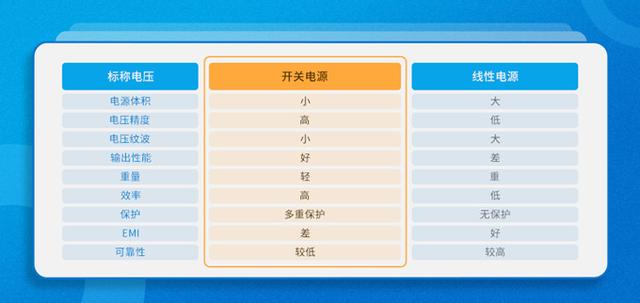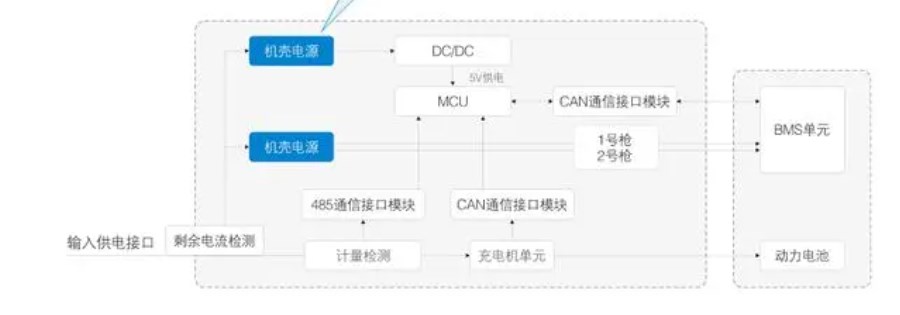-
Mail us
contact@tiger-transformer.com -
Phone us
(+86)15655168738
Mail us
contact@tiger-transformer.comPhone us
(+86)15655168738With the development and innovation of power electronics technology, AC/DC switching power supplies have basically replaced linear power supplies and are developing in the direction of small, lightweight and efficient. At present, switching power supply is an indispensable and key part of the rapid development of today's electronic information industry, and is widely used in electronic equipment in all walks of life. This article will introduce in detail the development history, working principle and function of switching power supply. Faced with the dazzling AC/DC switching power supply, how should we choose?
1. Advantages of switching power supply
Switching power supply: It is a type of power supply. The switching power supply uses modern power electronics technology to control the time ratio of the switch tube to turn on and off. A power supply that maintains a stable output voltage. Switching power supplies are generally composed of pulse width modulation (PWM) control ICs and MOSFETs.
Switching power supplies began to replace linear power supplies in the 1970s. With the development of technology and the improvement of regulations, switching power supplies have become more and more common. They have completely replaced linear power supplies in many occasions. The development direction of switching power supplies is High frequency, high reliability, low consumption, low noise, anti-interference and modularity.
1. AC/DC linear power supply
Assume that a 12Vdc output product is required. The common AC/DC linear power supply (transformer) is shown in Figure 3,
① Use the power frequency transformer U1 to convert the power frequency 50Hz, 220Vac into 8.5Vac.
② Use D1 and C1 for rectification and filtering, then 8.5Vac×1.414=12Vdc to convert the AC voltage into DC voltage. .

Figure 3 AC/DC linear power supply (transformer)
2. AC/DC switching power supply
Assume that a 12Vdc output product is required. The common AC/DC switching power supply (flyback) is shown in Figure 5,
① Through BD1 and C1 rectification and filtering, 220Vac is converted into 311Vdc;
② Through Q1 high-frequency switch (common frequency 65Khz), the energy is divided into many small parts;
③ At Q1 switch When off, D1 is turned on and is filtered and rectified by C2 to 12Vdc.

Figure 5 AC-DC switching power supply (flyback)< /p>
3. The difference between AC-DC linear power supply and switching power supply
By observing Figure 7, we can see that the difference between linear power supply and switching power supply is:
① Linear power transformer The current is large and the frequency is small;
②The switching power supply divides the energy into many small parts, so the transformer current is small and the frequency is high;

Figure 7 Comparison of linear and switching power supply transformer currents
Calculated by the transformer formula  It can be known:
It can be known:
ΔB: magnetic induction intensity, a value used to determine whether the transformer is working in a saturated state;
I: primary circuit of the transformer Current; Lp: Transformer primary coil inductance;
Ae: Transformer core cross-sectional area; Np: Transformer primary coil turns.
The primary current of a linear transformer is much larger than that of a switching transformer. The linear transformer must do the following:
①ΔB must be larger, and most use silicon steel sheets and silicon steel chip, the volume needs to be larger, and the core loss is large;
②Np needs to be wound more times, and the line loss is high;
The advantages and disadvantages of the two can be summarized as follows:< /p>

Table 1 Comparison between AC-DC linear power supply and switching power supply
2. Typical application analysis
Figure 2 is a system application block diagram of a DC charging pile. The system module requires an external power supply to achieve normal operation, and the voltage of the external power supply needs to be within the module working voltage range. In order to obtain this voltage, a device for voltage conversion is needed. This is the role of the "power supply".
At the same time, the system requires multiple voltages for power supply. The use of AC/DC switching power supply will greatly reduce the size and weight, improve the system efficiency, and at the same time have good output ripple and voltage accuracy performance, which can be provided to the back-end BMS, The voltages of the MCU and display are more stable, and system reliability is further improved.
①Convert 220Vac to 12V to power the BMS unit; ②Convert 220Vac to 24V to power the display screen
③Convert 24V to 12V to power the monitoring unit; ④Convert 24V to 5V to power the microcontroller

Figure 2 DC charging pile power supply system
3. AC/DC switching power supply selection guide
AC/DC switching power supplies are widely used, resulting in a variety of AC/DC switching power supplies. How to choose a correct and suitable power supply is a big problem in the industry. To this end, Jin Shengyang summarized a selection guide: ① Classified by packaging ② Classified by industry. The first type is based on application scenarios and selects AC/DC switching power supplies of different packages according to actual working conditions. The second type is based on the refined needs of the industry and selects industry-specific power supplies that meet certifications.